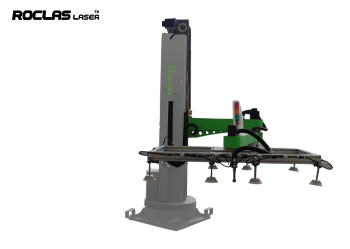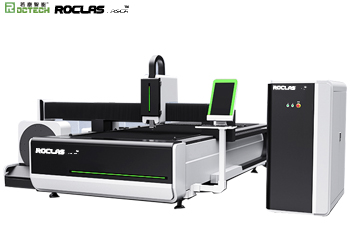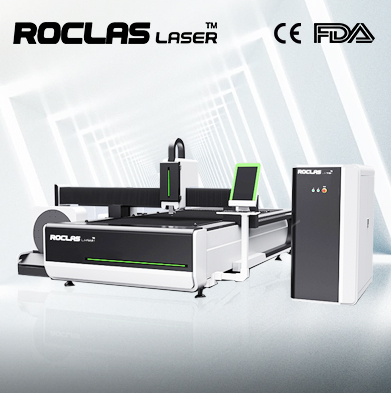Strona główna Blog Kompleksowy przewodnik po maszynach laserowych: rodzaje, zastosowania i przyszłe trendy
Wprowadzenie
Maszyny laserowe zrewolucjonizowały różne branże, oferując precyzję, wydajność i wszechstronność w obróbce materiałów. Od cięcia i grawerowania po spawanie i znakowanie, maszyny laserowe stały się niezbędnymi narzędziami w produkcji, opiece zdrowotnej, a nawet sztuce. Ten kompleksowy przewodnik zagłębia się w różne rodzaje maszyn laserowych, ich zastosowania i przyszłe trendy kształtujące tę dynamiczną dziedzinę.
Rodzaje maszyn laserowych

1. Maszyny laserowe CO2

Maszyny laserowe CO2 należą do najczęściej stosowanych typów, szczególnie w zastosowaniach grawerowania i cięcia. Wykorzystują one mieszaninę gazów, głównie dwutlenek węgla, do wytwarzania wiązki laserowej. Maszyny te są bardzo skuteczne dla materiałów niemetalicznych, takich jak drewno, akryl, szkło i tekstylia. Ich wszechstronność i stosunkowo niski koszt sprawiają, że są popularne w branżach, od oznakowania po modę.

2. Fiber Laser Machines
Fiber laser machines are known for their high efficiency and precision, especially in metal processing. They use a solid-state laser source, where the active medium is an optical fiber doped with rare-earth elements like erbium or ytterbium. Fiber lasers are ideal for cutting, welding, and marking metals, including steel, aluminum, and copper. Their compact design and low maintenance requirements have made them a favorite in the automotive and aerospace industries.
3. Nd:YAG and Nd:YVO4 Laser Machines
Neodymium-doped Yttrium Aluminum Garnet (Nd:YAG) and Neodymium-doped Yttrium Orthovanadate (Nd:YVO4) lasers are solid-state lasers used in various applications, including medical procedures, material processing, and scientific research. These lasers are particularly effective for high-power applications and can be used for cutting, welding, and drilling metals and ceramics.
4. Diode Laser Machines
Diode lasers are semiconductor-based lasers that are compact, energy-efficient, and cost-effective. They are commonly used in applications such as barcode scanning, laser printing, and medical treatments. Diode lasers are also finding increasing use in material processing, particularly in low-power cutting and engraving tasks.
Applications of Laser Machines
1. Manufacturing and Industrial Applications
Laser machines have become integral to modern manufacturing processes. They are used for cutting, welding, engraving, and marking a wide range of materials. In the automotive industry, laser welding ensures strong and precise joints, while laser cutting is used for intricate metal parts. In electronics, lasers are employed for micro-machining and PCB (Printed Circuit Board) manufacturing.
2. Medical and Healthcare Applications
The medical field has embraced laser technology for its precision and minimally invasive capabilities. Lasers are used in surgeries, dermatology, ophthalmology, and dentistry. For instance, laser eye surgery (LASIK) has become a popular method for correcting vision, while laser ablation is used for removing tumors and treating various skin conditions.
3. Art and Design
Artists and designers have found laser machines to be invaluable tools for creating intricate and detailed works. Laser engraving and cutting allow for precise and repeatable designs on materials such as wood, acrylic, and leather. This technology has opened up new possibilities in custom jewelry, architectural models, and personalized gifts.
4. Aerospace and Defense
The aerospace and defense industries demand high precision and reliability, making laser machines a natural fit. Lasers are used for cutting and welding complex components, as well as for marking and engraving parts for traceability. The ability to work with high-strength materials like titanium and composites is particularly important in these sectors.
5. Research and Development
Laser machines play a crucial role in scientific research and development. They are used in spectroscopy, microscopy, and material analysis. Lasers are also employed in experimental setups for studying fundamental physical phenomena, such as quantum mechanics and plasma physics.
Future Trends in Laser Technology
1. Increased Automation and Integration
The future of laser machines lies in increased automation and integration with other manufacturing processes. Smart factories are adopting laser machines that can communicate with other equipment, enabling seamless production lines. Advanced software and AI-driven systems are being developed to optimize laser parameters in real-time, improving efficiency and reducing waste.
2. Miniaturization and Portability
As technology advances, laser machines are becoming more compact and portable. This trend is particularly evident in medical and field applications, where portable laser devices can be used for on-site treatments and repairs. Miniaturized lasers are also being integrated into consumer electronics, such as smartphones and wearable devices.
3. Enhanced Precision and Power
Ongoing research is focused on developing lasers with higher precision and power. Ultrafast lasers, which operate in the femtosecond and attosecond range, are enabling new applications in micromachining and medical procedures. High-power lasers are being developed for industrial applications, such as thick metal cutting and deep welding.
4. Sustainable and Eco-Friendly Lasers
Sustainability is becoming a key consideration in the development of laser machines. Efforts are being made to reduce the energy consumption and environmental impact of lasers. This includes the use of renewable energy sources, recyclable materials, and eco-friendly cooling systems. Additionally, lasers are being used in environmental applications, such as pollution monitoring and waste management.
5. Expansion into New Materials and Applications
The versatility of laser machines is driving their expansion into new materials and applications. For example, lasers are being used to process advanced materials like graphene and carbon nanotubes, which have unique properties and potential applications in electronics and energy storage. Lasers are also being explored for use in 3D printing, where they can enable the precise deposition of materials for complex structures.
Conclusion
Laser machines have come a long way since their inception, evolving into powerful and versatile tools that are transforming industries and enabling new possibilities. From CO2 and fiber lasers to diode and solid-state lasers, each type offers unique advantages for specific applications. As technology continues to advance, we can expect to see even greater precision, efficiency, and sustainability in laser machines. Whether in manufacturing, healthcare, art, or research, lasers are poised to play an increasingly important role in shaping the future.
Niezależnie od tego, czy potrzebujesz ogólnej porady czy konkretnego wsparcia, chętnie Ci pomożemy.